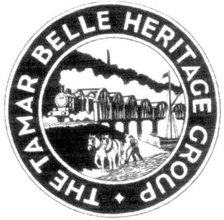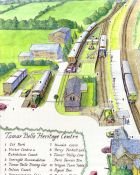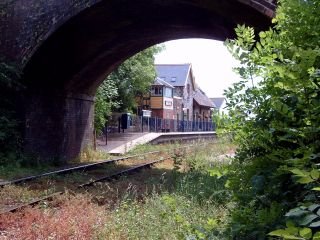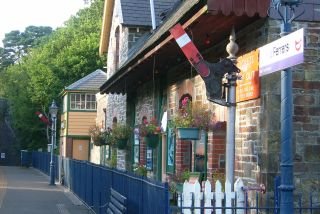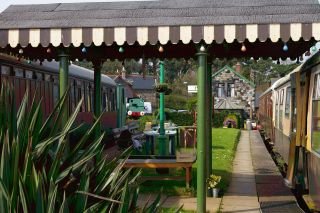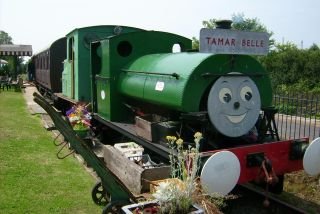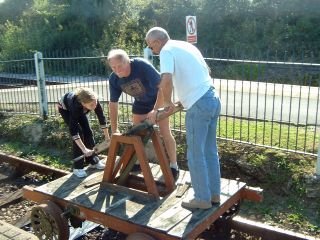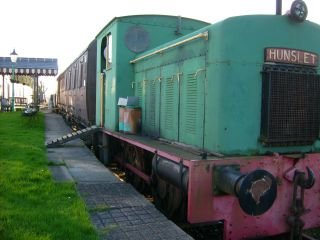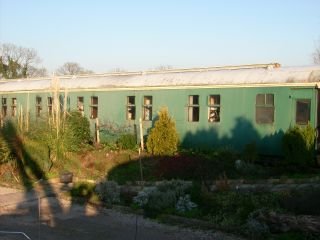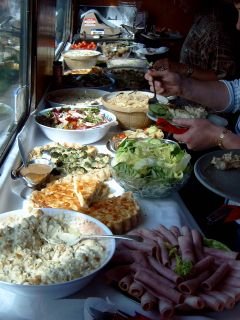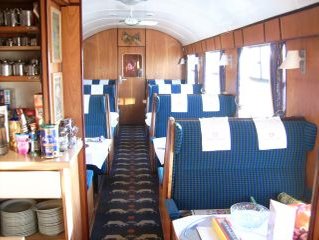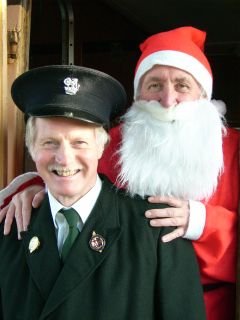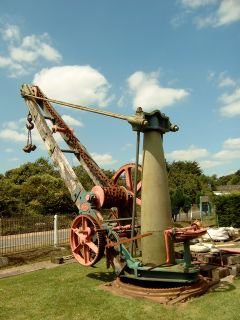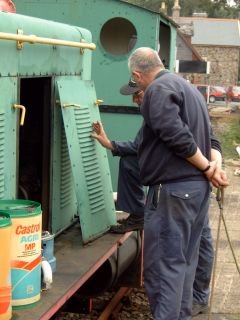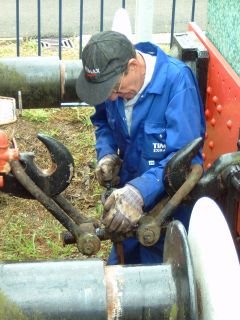Bere Ferrers station and Heritage Centre
Bere Ferrers station is located on the scenic 'TAMAR VALLEY LINE' which is the branch line from Plymouth to Gunnislake. The station is also home to the thriving----- The Tamar Belle Heritage Group comprises an unincorporated team of individuals with the common objectives of providing and maintaining interpretative records of changes in the economic and social history of the Tamar & TavyValleys for enjoyment of residents and visitors to this AREA of OUTSTANDING NATURAL BEAUTY |
By 1887, the PD&SWJR had managed to raise sufficient money to start work on the new line. This was due in no small measure to the Earl of Mount Edgcumbe and the Duke of Bedford, who, along with Lord St Levan, were instrumental in attracting investors to the Company. These three noblemen were, in any case, the main land owners along the line, and for £25,000 in fully paid up shares in the Company, they parted with all the land required. In effect, most of the money for building the line came from London and had it not been for the involvement of such notable persons as these, it is possible the line would not have been built so quickly.
click on map above for large image |
The Company had been supported throughout the Parliamentary battle and the ensuing financial troubles, by the London and South Western Railway, (who had reportedly paid nearly £200,000 for the Parliamentary work). They were obviously keen to have the new line built as quickly as possible, so that they could escape the grip of the GWR. The new line also had the advantage of much easier gradients and curves, as well as shortening the route between Waterloo and Plymouth by eighteen miles.
The LSWR had struck an agreement with PDSWJR to work the line in perpetuity at 50% of the gross receipts, with a maximum rebate of £15,650 per annum on through traffic, towards securing the payment of minimum dividends of 4.5% on £666,000 share capital and 4% on debenture stock". The LSWR also "....reserved the right to acquire the undertaking by purchase or lease in perpetuity", although in the event they never did, the line passing to the Southern Railway in the 1923 grouping.
Bere Ferrers station is only 18 minutes from Plymouth and 30 from Gunnislake at the end of the Tamar Valley Railway. Built in 1890, the railway was part of the Plymouth, Exeter and Waterloo main line and vital to developing the valley's fruit and vegetable industry. Although the branch to Callington was closed in 1965 and the line from Okehampton shut in 1968, the remaining line is one of the most beautiful railways anywhere in England and a vital service for local communities.
With its riverside frontage and historic church, Bere Ferrers has always been well worth visiting. Older Plymothians instantly associate it with excursion trains, bringing thousands for Sunday school treats and cream teas at the party fields. Many remember sheltering in temporary accommodation during the Blitz.
September 2002 saw the opening of the visitor centre at Bere Ferrers railway station: "The idea of the new visitor centre is to encourage people into the TamarValley, stopping here first," explained proprietor Chris Grove, as we enjoyed a cup of tea in the fully restored 1958 Pullman-style dining car. "They can learn a little of the history of the valley to whet their appetites for further exploration."
There's a lot to see, as I discovered when Chris showed me round. Our first port of call was the 1950 LMS sleeping carriage. The sleeping berths have been converted into display booths, showing the history of Bere Ferrers, Bere Alston and the TamarValley generally.
"We've got a great collection of period photographs and postcards," said Chris, "and are hoping to build on these further so that we can vary the displays. This will give people another reason to come back and look again. They can then look round the visitor centre site, where there'll be various artifacts - sack trucks, platform seats, milk churns, sand buckets, and lamp posts, hanging baskets - all the paraphernalia of a country station. There'll be a quiz, plus tea and refreshments in the dining carriage. People can enjoy Sunday lunches or an evening meal, served by liveried stewards in traditional Pullman style, or even B and B in the converted carriages. These date from the early 30s and were built to Sir Nigel Gresley's design for the East Coast Service - home of the Flying Scotsman. We've refurbished them to modern standards with en-suite bathrooms, heating and insulation."
Chris and his co-proprietor, Bill Bailey, have scoured England and Scotland on 'body-snatching' exercises, searching for vintage carriages and accessories. They have also sourced and acquired a Pecket steam engine from 1938 and three Hunslet diesel locomotives. The blue Hunslet worked at Ernesettle sidings (just down the line) until the late 1970s. Chris and Bill bought it in 1991 and it now shunts the 1926 LNER teak Brake carriage, which acts as a function room for birthday parties and business conventions, complete with a pianola and a mini-bar.
"The 1927 turntable was a wagon turntable from Devonport Dockyard," Chris continued. "It is big enough to turn our locos, whilst its working load is 72 tons. The test load is to turn 108 tons by two men in 30 seconds."
Equally fascinating is the 1860s signal box. In 1988 Chris transferred it from Pinhoe station on the former Southern main line between Exeter and Salisbury. "The box came complete with all its Victorian Stevens levers frame and block instruments. It had to be moved on the night it was decommissioned so we had from 11pm to 5am to do it! We brought it here on a lowloader and the job was all completed over one weekend from demolition to rebuilding.
Another fascinating working machine is the pump trolley - as featured in the classic Buster Keaton movie. As Chris says, "It's great for exercise after a big meal. Our yard crane was the original crane from Tavistock North station. Again, we salvaged it from a farmer's field and had to replace the drive shaft. It was used to lift anything heavy on and off trains. It is now in working order and can be hand-cranked by visitors."
"Another project we have worked on is to bring the signal box into interactive use. We've designed and built a microprocessor. There is a simulation of the links with Honiton and Exmouth Junction signalmen, with trains going both ways. If you don't pull the right levers or send the right block code, the train will appear on the panel lights and won't go any further until you've mastered the correct procedure."
Hands-on railway experience is the stuff of many a small boy's dreams. Chris's fascination with railways goes back a long way. He went loco spotting when steam was dying out rapidly and we were all more interested in newfangled diesels than dirty old steam engines.
"I discovered girls and forgot about railways until my late teens," said Chris. "It was the late 60s when I realised that the railways I'd known as a child and taken for granted had all but disappeared. I'd always dreamed of owning a railway station. After I'd made some money in business, it happened that Bere Ferrers came up for auction in 1979. I was as surprised as anybody when I ended up being the owner. I thought, what have I done? But the impetus was there to make it look like a station again and bring the whole thing back to life.
"I wanted to record and recapture the country railway. To me the whole atmosphere of railways is epitomised by the country station with its station master who knew everything that was coming and going through the village. All the goods would arrive by rail. People too went everywhere by rail. They went to war; they went on holiday, on honeymoon.
"I wanted to record and recapture the country railway. To me the whole atmosphere of railways is epitomised by the country station with its station master who knew everything that was coming and going through the village. All the goods would arrive by rail. People too went everywhere by rail. They went to war; they went on holiday, on honeymoon.
"We've constructed a time warp. Visitors get off the Bin and do a double-take. At the end of the day it's seeing people enjoy exploring this unique station and what we've recreated here that gives the greatest pleasure and keeps us going."
